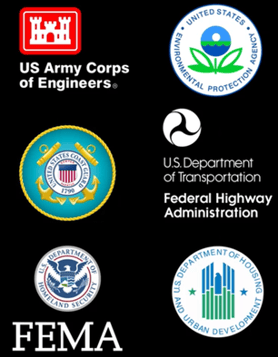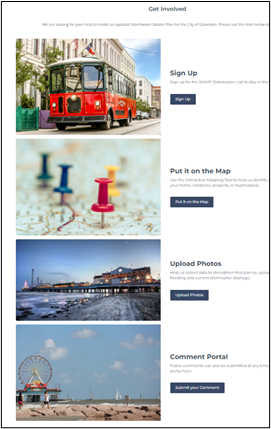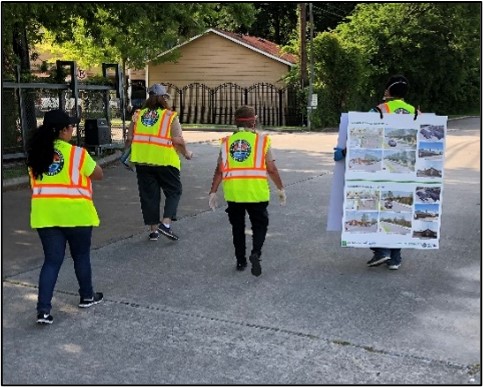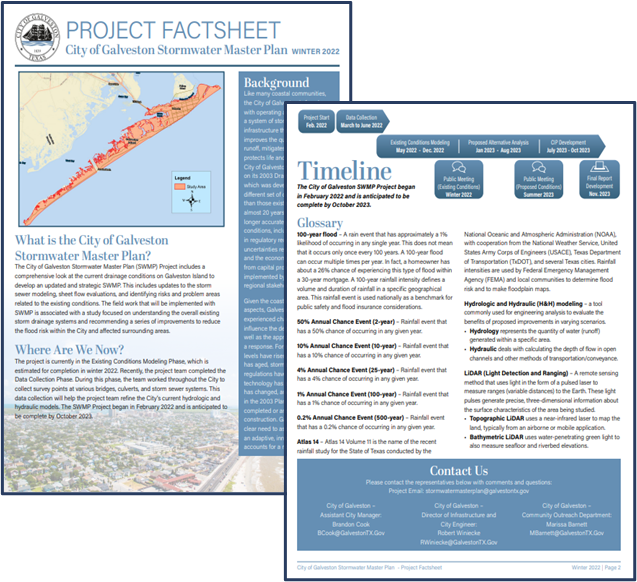WHAT DOES THIS MEAN?
Communications and environmental representatives at Hollaway Environmental and Communications, Inc. (Hollaway), understand the National Environmental Protection Act, or NEPA, as a federal environmental law enacted on January 1, 1970, that promotes the enhancement of the environment.
As communications personnel at Hollaway, we are experts in the specialties of public involvement and public engagement. What are the differences between these two specialties? Let me give you some background on what they both mean, why they matter, and how they relate to NEPA, beginning with a description of the two teams of professionals here at Hollaway.
The environmental team at Hollaway includes environmental scientists who follow the legal and environmental requirements of NEPA, including conducting environmental assessments, land or oyster surveys, ecological modeling, and mitigation planning. Hollaway’s communication team provides NEPA-compliant public involvement through crisis communication services, drone capabilities, social media and project management, meeting support, and full audio/visual capabilities.
In regard to communications, NEPA requires federal agencies, like the U.S. Army Corps of Engineers, U.S. Coast Guard, and the Environmental Protection Agency (to name a few), to assess the environmental effects of their proposed actions prior to making decisions and implementing projects.

These environmental effects include, but are not limited to, water and biological resources, environmental justice, and community impacts. All of these effects involve the human factor – the impact on you and me.
What triggers NEPA? NEPA is required when a federal action is taken that may have an impact on the human and natural environment. These federal actions include:
- Federally funded projects
- Projects that require a federal permit
- Policy decisions
- Federal programs or projects
Several examples of federal permits for the clients and projects we work with include Clean Water Act permits with the U.S. Army Corps of Engineers (USACE), the USACE Bridge Permit, and the Section 10 Rivers and Harbors Act Permit. A few examples of federal funding that affect us specifically in Texas include the Federal Highway Administration (TxDOT projects), Housing and Urban Development (City of Houston housing and resilience projects), and the Federal Emergency Management Agency (MAAPNext/Harris County Projects).
THE PUBLIC INVOLVEMENT PROCESS
After funding is determined, Hollaway’s public involvement specialists implement NEPA-required actions. To better define these actions, the U.S. Congress prescribed a procedure called “the NEPA process.” You can see in the graphic below that this process requires federal funding, timely noticing, an initial scoping meeting with the public and stakeholders, consideration of potential effects, a public event such as a meeting and/or hearing, and the request for and documentation of public comments and feedback.

The specific differences between public involvement and public engagement in this process include, the source of funding, potential changes to policy, environmental effects, and the requirement of a documented public event such as a public hearing (e.g., town hall). Public input then plays a part in an environmental decision in the form of a Finding of No Significant Impact (for example), and a final summary of this decision. Public involvement can influence laws, and it is meant to ensure that citizens have a direct voice in public decisions.
Though NEPA mandates that the environmental impact of projects be reviewed and disclosed to the public by law, the legal ramifications and constraints should not limit a communications specialist’s empathy and decision-making regarding the specific citizens and communities they work with.
HOW DOES PUBLIC ENGAGEMENT DIFFER?
Public engagement differs from public involvement in that public information is generally more accessible and less formal, and more details are available regarding the timeline and long-term funding of the project. For example, thoughtful and proactive public engagement assumes early coordination and collaboration to build a connection with the community to show transparency of intent and messaging. This includes providing multiple lines of communication and access so the public’s comments, questions, and concerns are known and implemented. Public engagement typically includes out-of-the-box innovations in aspects of website, graphic, and presentation design; project and stakeholder-specific material creation; neighborhood canvassing; virtual and in-person workshops; data/metric gathering; community representative training; and communication with and acknowledgement of the diversity of the neighborhoods and city in which we work. Public engagement practitioners aim to connect with and receive feedback from the public and community involved in each project. Though similar to public involvement, public engagement is not required by law and may not affect policy or laws.
Communications specialists at Hollaway have a unique advantage regarding engagement with the public—not only are we experts at problem-solving, empathy, collaboration, and, we are also experts at navigating the legal requirements for public involvement.


-1.png?width=1024&height=768&name=MicrosoftTeams-image%20(6)-1.png)




NEPA is important to our company. We are thrilled to offer environmental services and communications services, such as public involvement and public engagement, to clients! To learn more about other services that Hollaway offers, visit www.hollawayenv.com.
.png?width=2000&height=600&name=Blog%20Post%20Covers%20(7).png)
